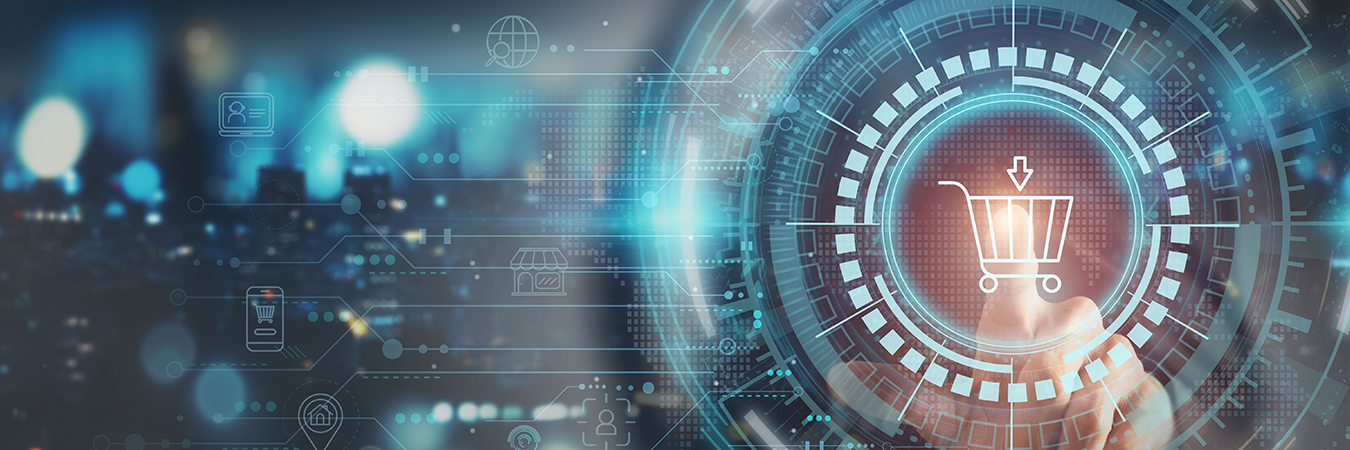Convenience and personalization are at the forefront of the modern shopping experience. With today's consumers seeking seamless interactions across all platforms, developing a robust omnichannel retail strategy has never been more important.
From social media to retail brick-and-mortar storefronts, each touchpoint in an omnichannel shopping journey is a potential opportunity for improving service quality and boosting your return on investment (ROI). By streamlining how these channels integrate with one another, businesses can create a cohesive and engaging customer journey that not only meets but exceeds customer expectations.
There are three best practices to maximize the impact of your omnichannel retail strategy.
What Is an Omnichannel Retail Strategy?
An omnichannel retail strategy allows shoppers to extend their experience across multiple platforms, effortlessly gliding from one interaction to another. For example, a customer might see a product in an Instagram ad, purchase it on an ecommerce site, then pick it up at their local retail brick-and-mortar store.
By integrating mobile, online, social media, and in-person interactions, businesses can drive higher ROI — omnichannel shoppers not only spend 1.5x more than single-channel buyers, but improving the customer experience can also mean less cart abandonment, greater brand loyalty, and higher customer retention rates.
3 Tips to Level Up Your Omnichannel Retail Strategy
Answer Omnichannel Retail Demand in Real-Time
In today's fast-paced retail environment, real-time responsiveness is critical for meeting customer expectations across multiple channels. Whether they’re browsing in a retail brick-and-mortar store or navigating an online marketplace, consumers demand convenient and friction-free shopping experiences marked by prompt and personalized interactions. Any delay or inconsistency can mean dissatisfaction and lost sales.
Consider integrating these real-time capabilities into your omnichannel retail strategy:
- Leverage automation technology: Implementing technologies such as chatbots and automated email responses allows your team to respond to customer needs immediately.
- Use a unified customer data platform: A unified CRM system consolidates data from various channels in real-time, enabling your team to tailor responses and recommendations based on customer profiles viewed from an all-in-one dashboard.
- Explore AI-powered assistants: AI assistants can instantly address customer questions and point them to the appropriate resources. This improves response times and helps scale customer service efforts to ensure 24/7 availability.
- Implement real-time inventory management: Real-time inventory management systems update stock levels across all channels instantaneously, providing customers with accurate information about product availability.
Streamline Omnichannel Fulfillment
Enhancing your omnichannel fulfillment systems is essential for delivering exceptional customer service throughout the whole customer journey — from the initial impression to the final product delivery. Here’s how it can benefit both your operations and customer satisfaction.
- Optimized demand forecasting: By understanding customer preferences and anticipating market shifts, you can better align your inventory levels with supply and demand. This minimizes the risk of stockouts or excess inventory.
- Enhanced supply chain responsiveness: Technologies such as AI and predictive analytics help streamline supply chain operations. These tools identify potential bottlenecks and optimize product routing, which increases agility in the supply chain, lowers lead times, and reduces operational overhead.
- Automated inventory tracking: Omnichannel fulfillment technologies that automate inventory management ensure products are available when and where customers need them — which is especially important if you have multiple storefronts. These solutions can reduce the likelihood of errors and delays.
- Real-time order management: Implementing real-time order management systems allows for immediate processing and updates across all channels. This ensures that customers receive accurate information about their orders and delivery times.
- Seamless returns and exchanges: Use an integrated return management system to allow customers to return or exchange products at any online or offline channel — regardless of how they initially purchased the product — to provide added convenience and improve customer satisfaction.
Establish Cohesive Branding and Messaging
Today, high-quality products alone are not enough to attract, convert, and retain customers. Recent research has found that 52% of shoppers will switch to a competitor after having a single negative experience with a brand. Meanwhile, 49% of shoppers who’ve switched from a brand they were previously loyal to say that a poor customer experience was to blame.
One way to ensure a seamless customer experience across touchpoints is by creating consistent branding and messaging across retail brick-and-mortar and digital channels. Cohesive branding enhances brand recall and contributes to a greater sense of reliability, trust, and authenticity — all essential qualities for long-term customer relationships.
Use these strategies to build a strong, consistent brand identity:
- Visual consistency: Ensure that all visual elements, such as colors, fonts, and logos, are uniform across all channels, including your website, retail brick-and-mortar store, and marketing materials. This reinforces brand recognition.
- Consistent voice and tone: Maintain a consistent voice and tone in all communications, whether it’s friendly and approachable, lighthearted and humorous, or buttoned-up and professional.
- Unified customer service: The quality of your customer service should not differ between channels. Uniformity helps you meet customer expectations while increasing their confidence in your brand. Even better, leverage an omnichannel customer service solution that maintains a single view of the customer, ensuring continuity in interactions.
- Clear brand values: Clearly communicate your brand values in every customer interaction. Whether it’s sustainability, innovation, or customer-centricity, consistently showcasing your core values allows you to build customer trust and loyalty.
How an Omnichannel Retail Strategy Can Improve Your Business’s Financial Health
Developing an omnichannel retail strategy is pivotal in providing customers with personalized and convenient shopping experiences. By integrating touchpoints so seamlessly that customers hardly notice they're switching between them, you boost customer satisfaction and the efficiency of your retail operations — all while reducing costs and increasing revenue.
To further maintain your business's financial health, consider collaborating with a reliable financial institution. Citywide Banks, a division of HTLF Bank can provide expert guidance to help you navigate both the challenges and opportunities in today’s market — reach out to learn more today.
These links are being provided as a convenience and for informational purposes only; they do not constitute an endorsement or an approval by HTLF of any of the products, services or opinions of the corporation or organization or individual. HTLF bears no responsibility for the accuracy, legality or content of the external site or for that of the subsequent links. Contact the external site for answers to questions regarding its content and privacy rules.









